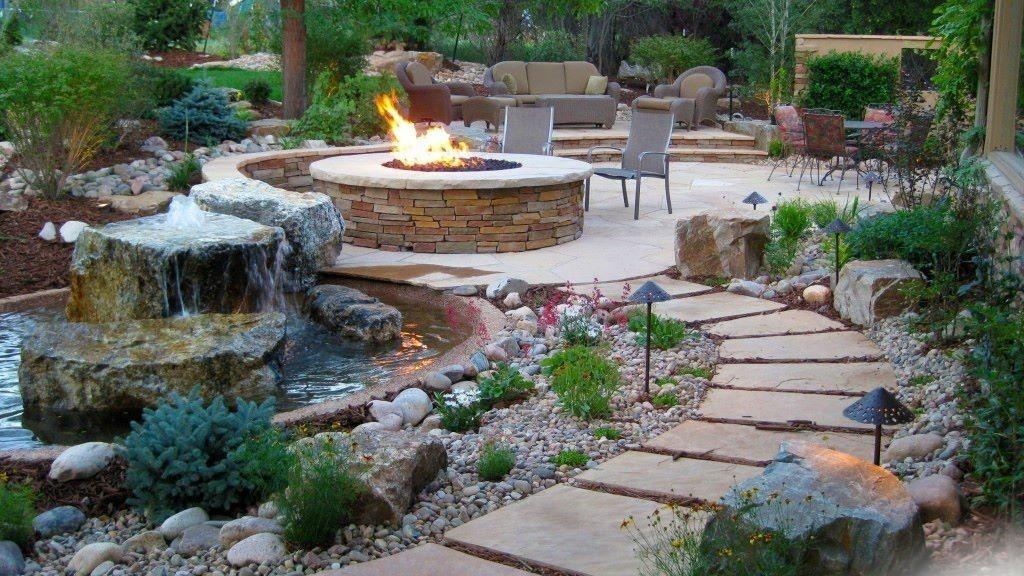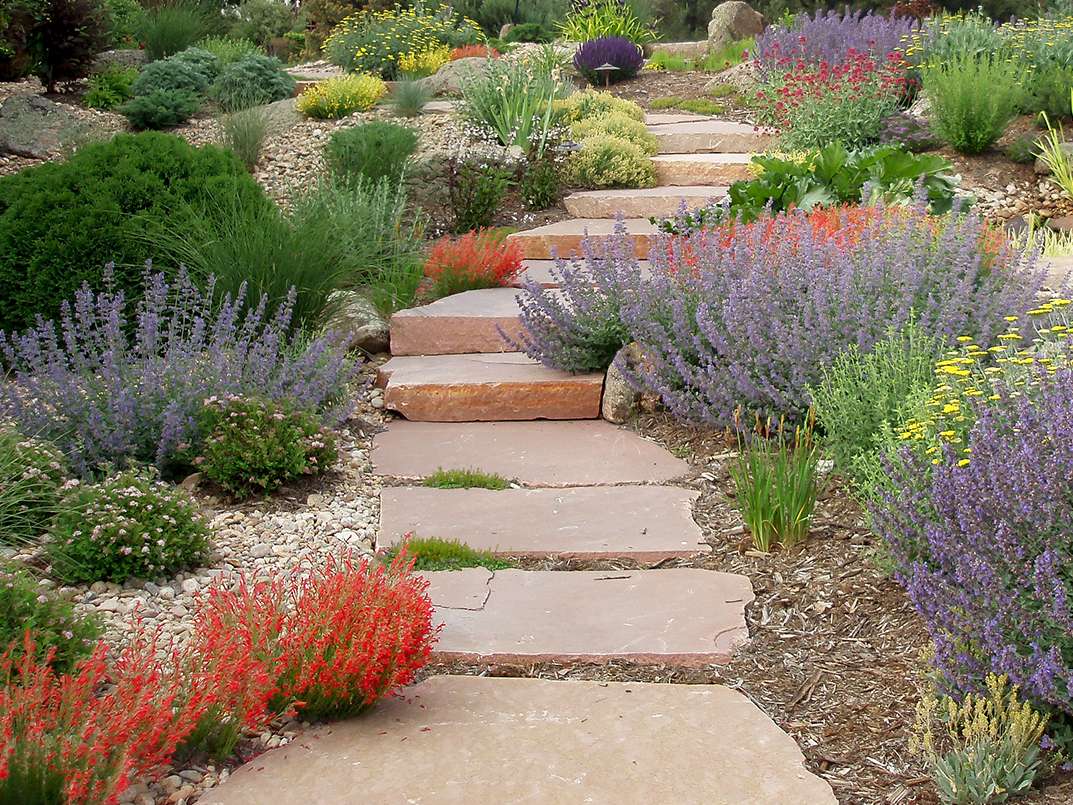Water is very important for plants and people. In many places, water is hard to get. Gardens need water to grow well. But we can use less water with smart garden ideas. One way is called xeriscaping. It helps save water and keeps gardens nice and green.
In this article, we will learn about xeriscaping principles. These are simple rules to make a garden that uses little water. You will see how to plan and take care of such a garden. It is good for your home and the earth.
What is Xeriscaping?
Xeriscaping is a way to garden using less water. The word comes from Greek “xeros,” meaning dry. This kind of garden uses plants that need little water. It also uses smart ways to keep water in the soil.
The main goal is to save water but still have a lovely garden. Xeriscaping is good in dry places but can work anywhere. It helps stop water waste and protects the environment.

Credit: www.brightview.com
Why Choose Xeriscaping?
- Save water: Use much less water than normal gardens.
- Low care: Plants need less work and less watering.
- Save money: Less water means lower water bills.
- Help nature: Protect soil and reduce pollution.
- Good look: Xeriscape gardens are pretty and neat.
The 7 Principles of Xeriscaping
To make a xeriscape garden, follow these seven simple rules. Each one helps save water and keeps plants healthy.
1. Plan And Design Carefully
Good planning is the first step. Think about your space, sun, and soil. Draw a map of your garden. Decide where to put plants, paths, and water lines.
Group plants that need similar water together. This saves water and helps plants grow better. Think about how the garden will look all year.
2. Improve The Soil
Healthy soil holds water well. Add organic matter like compost to your soil. This helps soil keep water longer.
Good soil lets water soak in slowly. It stops water from running away. Better soil means less watering for your plants.
3. Choose The Right Plants
Pick plants that need little water. Native plants are a good choice. They grow well in your area with little care.
Succulents, cacti, and drought-tolerant shrubs are good examples. These plants save water and look nice. Avoid plants that need a lot of water.
4. Use Mulch
Mulch is a layer of material on the soil surface. It can be wood chips, bark, or stones. Mulch helps keep soil moist by stopping water evaporation.
It also stops weeds from growing. Weeds use water and make plants weak. Mulch keeps your garden neat and healthy.
5. Use Efficient Irrigation
Water your plants smartly. Use drip irrigation or soaker hoses. They deliver water directly to the roots. This saves water and reduces waste.
Avoid sprinklers that spray water in the air. Water early in the morning or late in the evening. This reduces water loss from heat.
6. Limit Lawn Areas
Lawns need a lot of water. In xeriscaping, keep lawn areas small. Use grass only where you really need it.
Replace some lawn space with rocks, mulch, or drought-tolerant plants. This lowers water use and keeps gardens interesting.
7. Maintain Your Garden Well
Even xeriscape gardens need care. Check plants regularly for health. Remove dead leaves and weeds.
Adjust watering with the seasons. Water less in rainy times and more in dry times. Good care keeps your garden strong and beautiful.
How to Start Xeriscaping in Your Garden
Here is a simple way to begin xeriscaping:
- Look at your garden: Note sun, shade, and soil type.
- Plan your garden: Draw a map and mark plant places.
- Test your soil: Add compost if needed.
- Pick plants: Choose drought-resistant and native types.
- Put mulch: Cover soil to keep moisture.
- Install irrigation: Use drip or soaker hoses.
- Care for plants: Water well and remove weeds.
Benefits of Xeriscaping
Xeriscaping is good for your home and the environment. Here are some benefits:
| Benefit | Why It Matters |
|---|---|
| Save Water | Uses up to 50% less water than normal gardens. |
| Lower Costs | Less water and less garden care means saving money. |
| Easy Care | Plants need less work and stay healthy. |
| Protect Nature | Reduces soil erosion and pollution from water runoff. |
| Beautiful Spaces | Creates attractive gardens with a variety of plants. |
Common Plants Used in Xeriscaping
Some plants are perfect for xeriscaping. Here are a few easy-to-grow options:
- Succulents: Aloe, Agave, and Sedum.
- Cacti: Barrel cactus, prickly pear.
- Shrubs: Lavender, rosemary, sage.
- Grasses: Blue fescue, fountain grass.
- Trees: Olive, mesquite, palo verde.
These plants need little water and are tough in dry weather. They also add color and shape to your garden.

Credit: www.ecohome.net
Tips for Success with Xeriscaping
- Start small. Change one part of your garden first.
- Learn about plants before planting them.
- Water deeply but less often.
- Keep mulch fresh and thick.
- Watch your garden through the seasons.
Remember, xeriscaping is about working with nature. It takes time to see full results. But with patience, you will have a garden that saves water and looks great.
Frequently Asked Questions
What Is Xeriscaping?
Xeriscaping is landscaping that reduces water use. It uses drought-tolerant plants and efficient irrigation.
Why Is Xeriscaping Important?
It saves water and reduces maintenance. Ideal for dry climates. Helps conserve resources.
How Does Xeriscaping Save Water?
Uses native plants adapted to local conditions. Minimizes the need for irrigation.
What Plants Are Best For Xeriscaping?
Drought-tolerant plants like succulents, cacti, and native grasses. They thrive with little water.
Conclusion
Xeriscaping is a smart way to garden. It uses less water and helps the earth. By following the seven principles, you can make a garden that is easy to care for and beautiful. Choose the right plants, improve your soil, and water wisely. Use mulch and plan well.
This way, your garden will thrive even in dry times. You will save water, money, and time. Plus, you help protect the environment for the future. Start xeriscaping today and enjoy a green, healthy garden all year long.
5 min read

